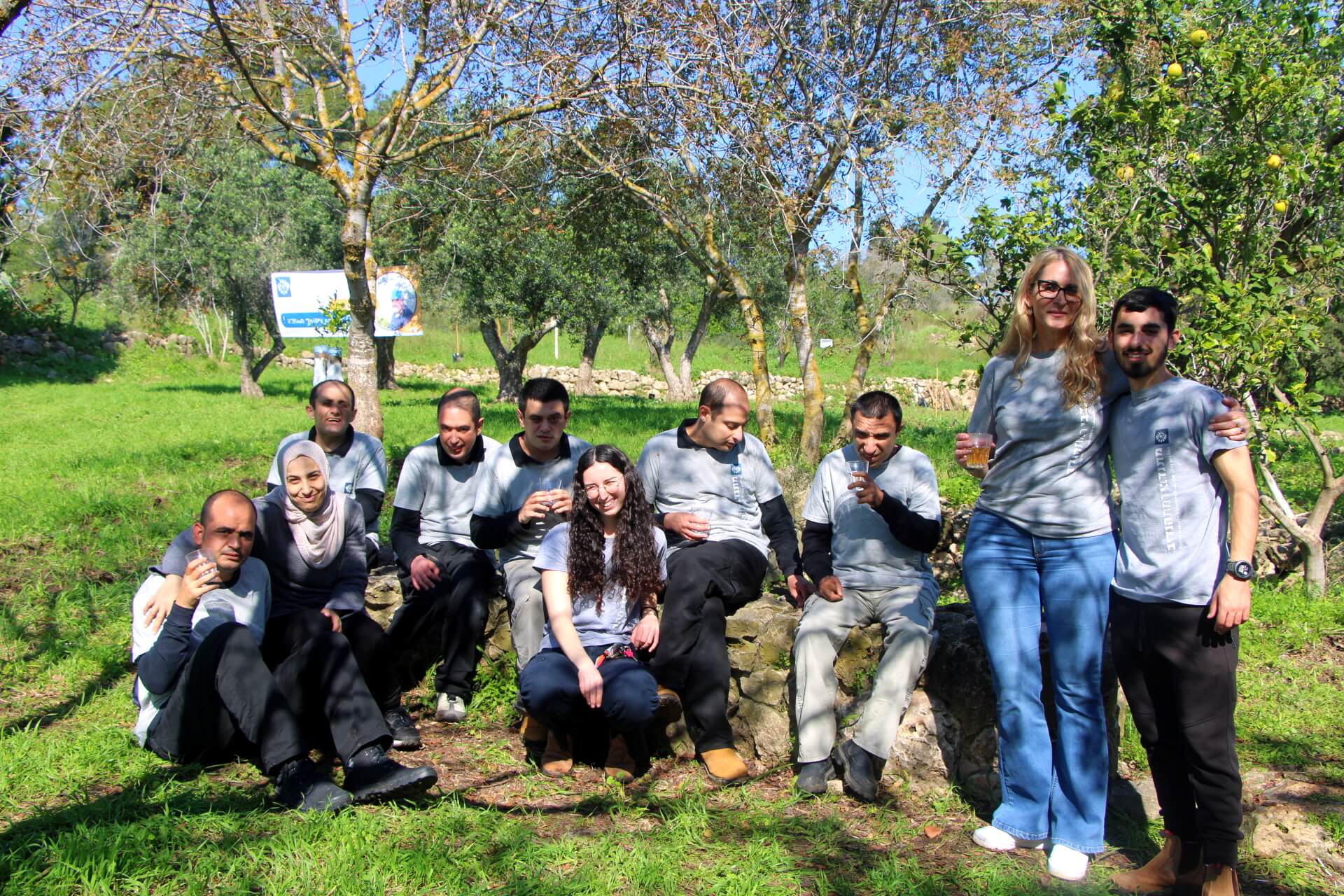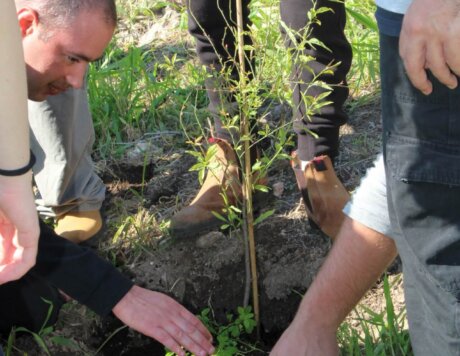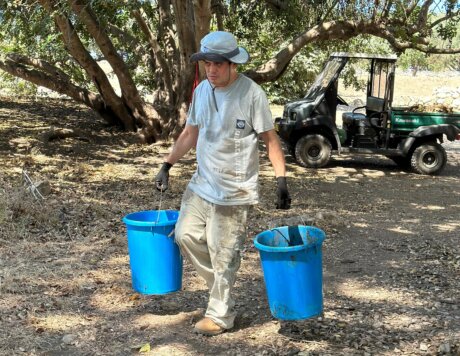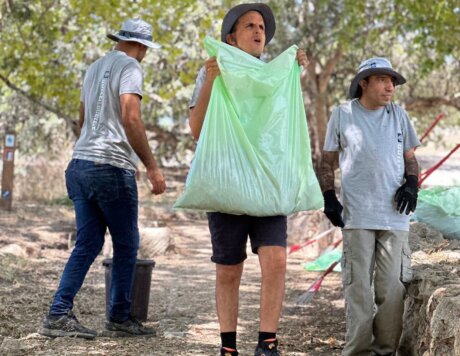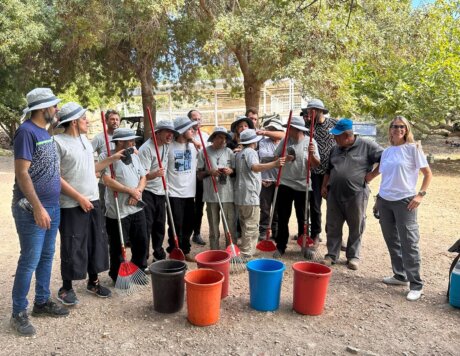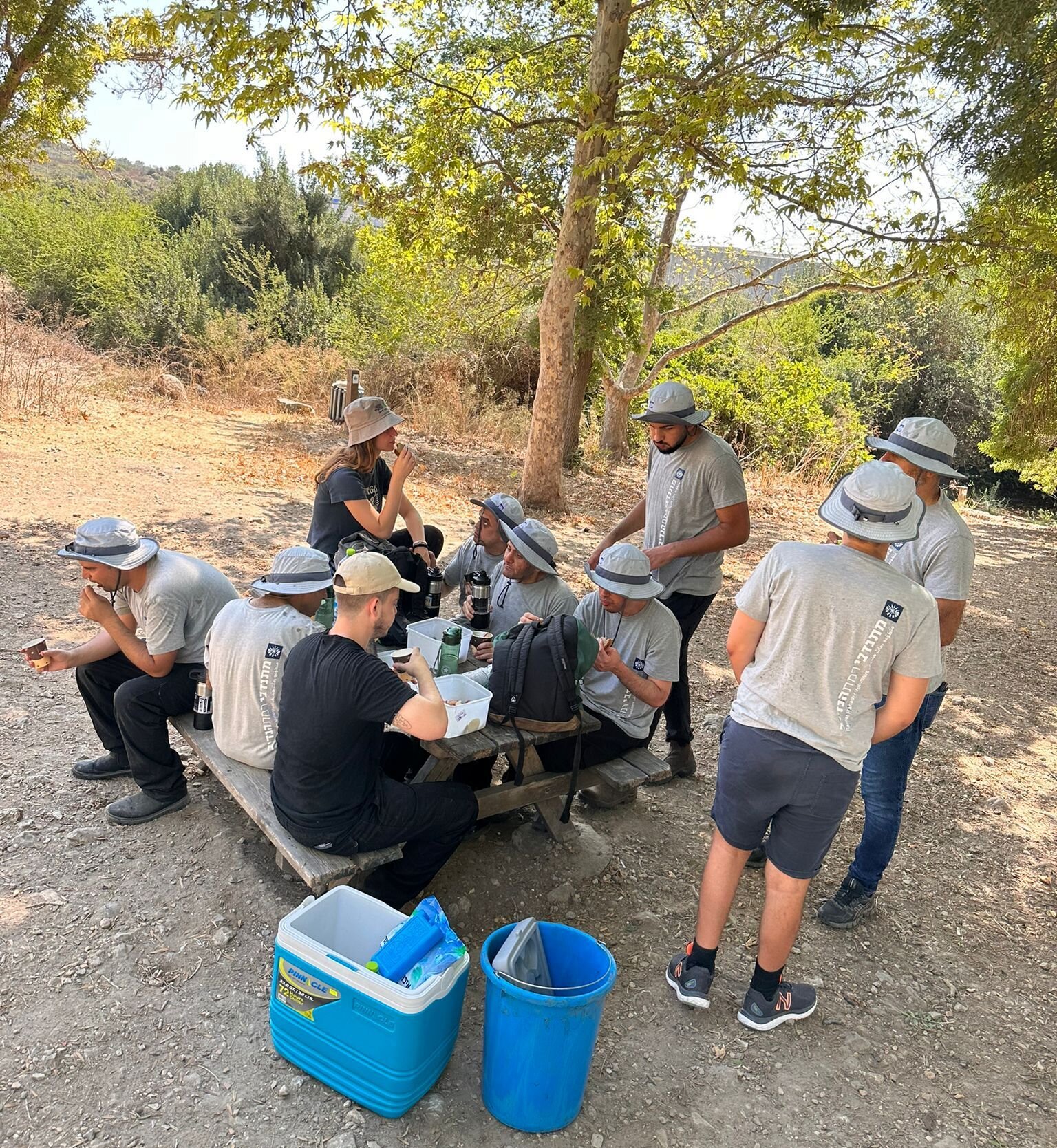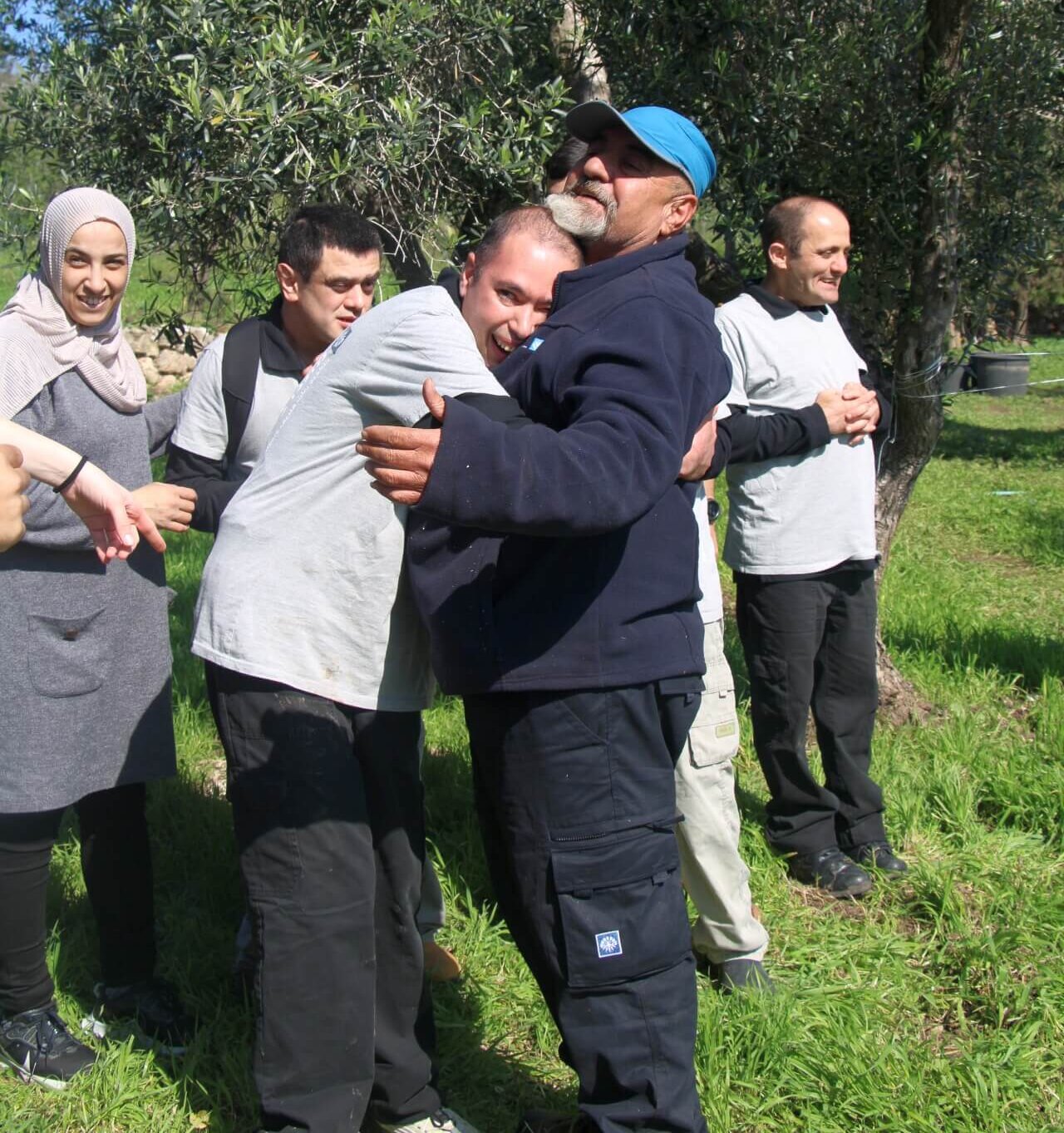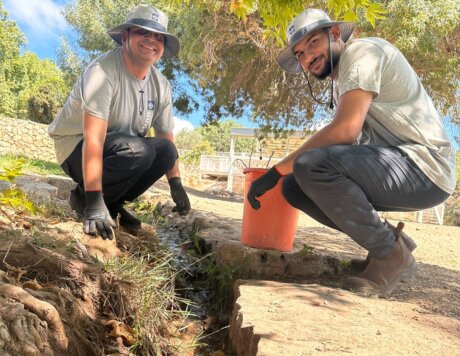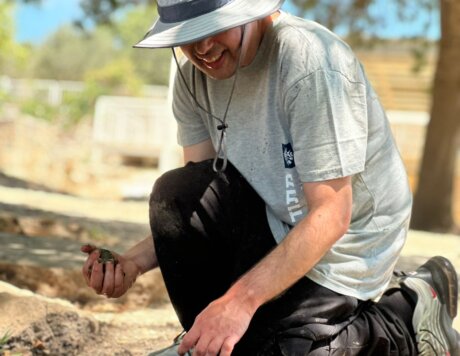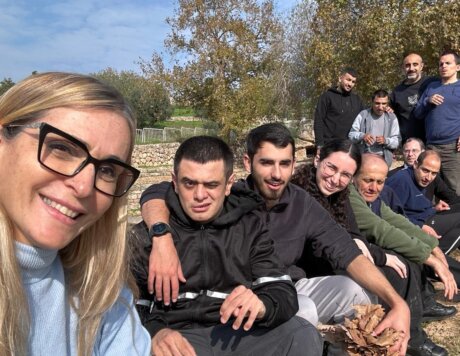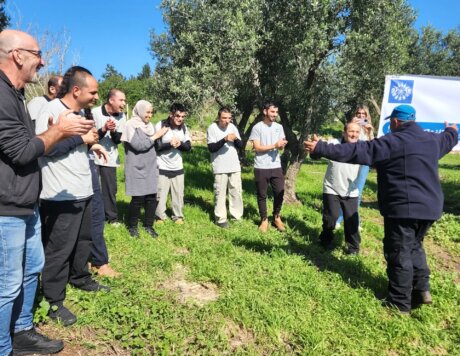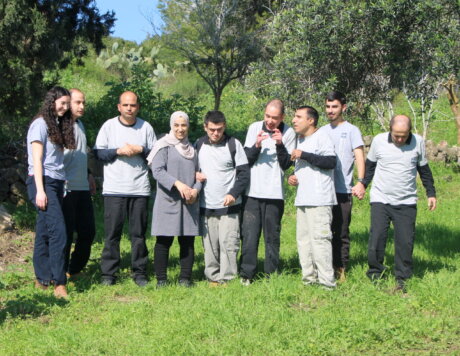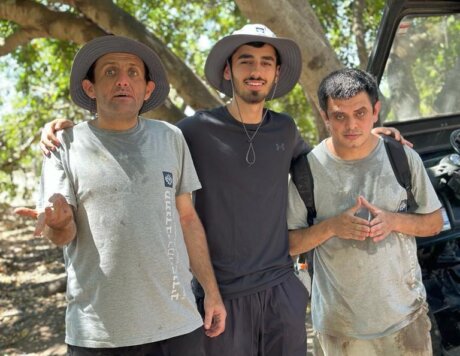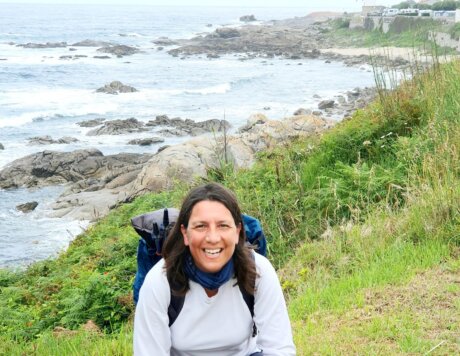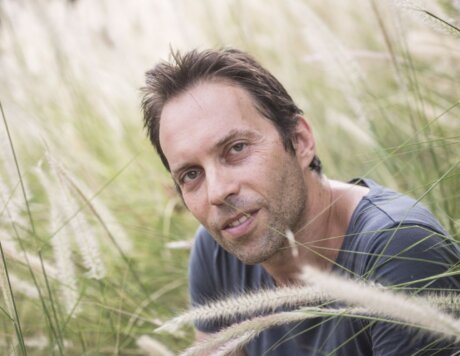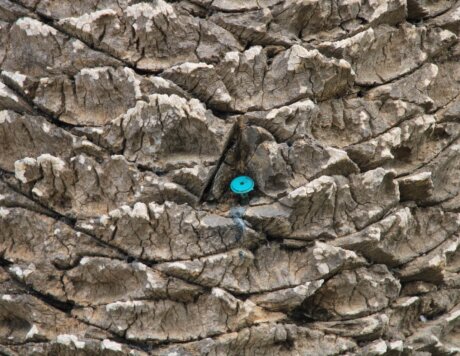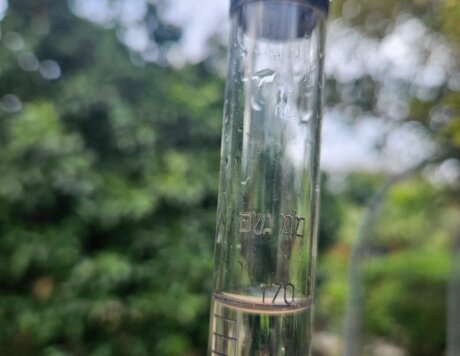Mahfouz, who worked with the home’s residents in the past, relates that in addition to tailoring the physical work to take into account their disabilities, the activities also include tailored explanations, for example, on the spring and the carob tree as resources that the wildlife and goat herd feed on. ‘Whatever happens I never pass up on our Thursday meetings. I’m connected to those residents’, he says excitedly. At the Tu Bishvat events, he relates that they hugged him and that he approached them even before he approached his own family, which was also present at the event.
‘The meetings with the park staff and the warm connection that’s developed with Mahfouz are extraordinary examples of accepting the other’, emphasises Sarit.
The main event of Tu Bishvat
The activity with the home’s residents was gradually exposed to the staff of Ramat Hanadiv: ‘From week to week the residents and their guiding staff gained confidence at the meetings and we generated confidence together with them’, relates Hila. ‘We waited for a suitable opportunity to create a joint meeting and then Tu Bishvat arrived… all the conditions were ripe: familiarity, a planting activity in the orchard by the spring, which is the residents’ permanent volunteering location – everything worked out, only the weather was bad. After a few postponements because of the rain, the cold and the mud, we managed to hold the event, which was put together so as to facilitate the interaction and give the residents their role as equals in the activity’.


